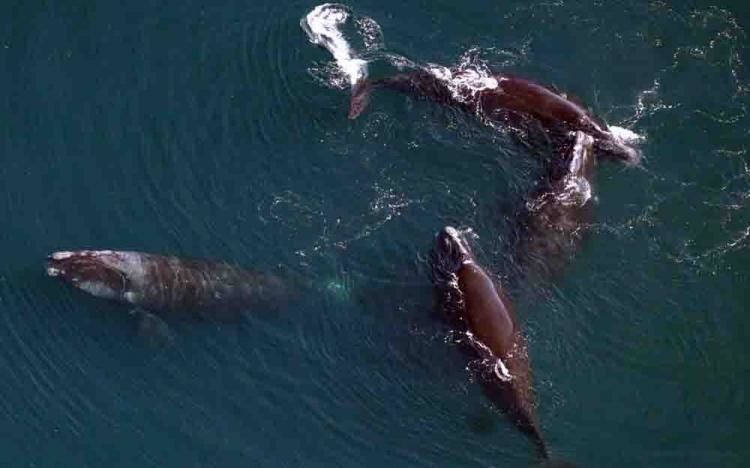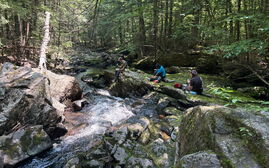‘Troubling’ impact on lobster fishery seen in federal study of right whale population
 Courtesy / Northeast Fisheries Science Center
A new federal assessment says the lobster fishery poses a risk to the North Atlantic right whale population.
Courtesy / Northeast Fisheries Science Center
A new federal assessment says the lobster fishery poses a risk to the North Atlantic right whale population.
The federal government on Thursday released a new report saying the lobster fishery poses a risk to the endangered North Atlantic right whale population.
The assessment, conducted by the National Marine Fisheries Service, is expected to have a severe impact on the fishery. The long-term ramifications “remain troubling,” Gov. Janet Mills said in a statement.
The assessment calls for the fishery to reduce the potential for serious injury and death to right whales by 60% over the coming decade. Based on periodic evaluations during that time, the risk reduction target could be increased to 87% in 2030.
“The lobster fishery as we know it will not exist if this is fully implemented,” the Maine Lobstermen’s Association said in a statement. Maine is home to the nation’s largest lobster fishery, and brought in a catch of over $400 million last year despite the pandemic.
According to the association, U.S. fishermen are being held accountable for right whale deaths occurring elsewhere and the assessment doesn’t include a plan to address U.S. vessel strikes or “to more aggressively engage with Canada on its outsized role in the right whale population decline.”
Additionally, the service "has not made changes to the right whale population projection model,” the association said. “They continue to use worst case scenario assumptions which overestimate the right whale population decline.”
The group said the service "has not acknowledged that the lobster industry has reduced right whale entanglement by 90% since 2010 and has a 93% compliance with whale regulations."
No right whales are known to have died or been seriously injured in Maine lobster gear, and the last known entanglement in Maine lobster gear occurred more than 17 years ago, the association said.
Reduce vertical lines
The assessment calls for phases in risk reduction measures over 10 years, with evaluations scheduled for 2023-24 and 2025-26.
Those measures remain unclear, as the industry waits for the National Marine Fisheries Service to publish a “final whale rule,” expected to be issued this summer.
Proposed modifications would:
• Reduce the number of vertical lines, also called endlines or buoy lines, that connect traps on the sea floor to buoys on the water’s surface. The proposal is to require more traps between buoy lines.
• Introduce so-called “weak” insertions or rope into buoy lines that would make it easier for whales to break free if they do become entangled.
• Modify existing seasonal restricted areas to be closed.
• Modify gear marking to introduce state-specific marking colors and increase the number of and area of marked lines.
• Introduce the possibility of fishing with “ropeless” gear, a type of technology that’s still in development.
The association has been advocating for the service to include Maine’s proposal for conservation equivalencies in the final rule. The equivalencies would allow each zone to adopt a modified version of the trawling up and weak point requirements, which is expected to reduce the impact on fishermen to allow for safer implementation based on local fishing conditions, while still achieving the same overall risk reduction.
“We are hopeful that National Marine Fisheries Service will include conservation equivalencies in the final rule so that lobstermen can employ fishing practices that achieve necessary conservation benefits without sacrificing their safety at sea,” the Department of Marine Resources’ commissioner, Pat Keliher, said in a news release.
The department will conduct an evaluation of the assessment.
The next step is the issuance of a final rule that will implement changes to the Atlantic Large Whale Take Reduction Plan and is expected to include changes to the way the lobster fishery operates.
“We anticipate that the final rule will be published later this summer,” Keliher said. “The final rule will outline measures the lobster industry must implement in the near-term.”
The National Marine Fisheries Service is an agency of the National Oceanic and Atmospheric Administration and is responsible for overseeing fishing in federal waters.














0 Comments